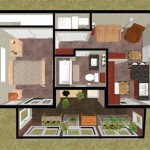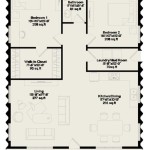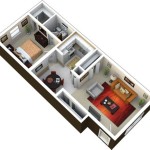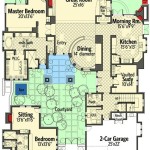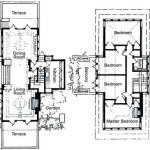Dog house plans are detailed instructions and diagrams that guide the construction of a shelter for dogs. These plans typically include measurements, materials lists, and step-by-step instructions to ensure proper assembly. Dog houses serve as essential outdoor living spaces for dogs, providing protection from elements, a sense of security, and a comfortable place to rest.
The benefits of using dog house plans are numerous. They ensure that the dog house is designed and built to meet the specific needs of the dog, such as size, breed, and climate conditions. Plans provide clear instructions, making it easy for both experienced and beginner builders to construct the dog house efficiently, saving time and resources.
In this article, we will delve into the various aspects of dog house plans, including their types, features, and considerations for choosing the right plan. We will also provide guidance on how to effectively use these plans to build a safe and comfortable shelter for your furry friend.
When considering dog house plans, it is important to keep in mind the following key points:
- Size and dimensions
- Materials and insulation
- Ventilation and drainage
- Roof design and weatherproofing
- Ease of cleaning and maintenance
- Durability and longevity
- Customization options
- Cost and budget
By carefully considering these factors, you can choose the best dog house plan that meets the specific needs of your dog and provides a comfortable and safe shelter for years to come.
Size and dimensions
Determining the appropriate size and dimensions for a dog house is crucial to ensure the comfort and well-being of your furry friend. The dog house should provide enough space for the dog to stand up, turn around, and lie down comfortably without feeling cramped or restricted.
To determine the ideal size, measure your dog’s height from the top of their head to the ground, and their length from the tip of their nose to the base of their tail. Add 2 to 4 inches to both measurements to allow for comfortable movement and growth.
For example, if your dog is 20 inches tall and 24 inches long, a dog house with interior dimensions of approximately 22 inches in height and 26 inches in length would be suitable. However, it’s always advisable to choose a slightly larger size to accommodate changes in the dog’s size and posture over time.
Consider the breed and size of your dog when selecting the appropriate size. Smaller breeds, such as Chihuahuas and Yorkshire Terriers, may require a dog house with dimensions of around 24 inches in length, 18 inches in width, and 20 inches in height. Medium-sized breeds, such as Beagles and Cocker Spaniels, may need a dog house measuring approximately 30 inches in length, 24 inches in width, and 24 inches in height. Large breeds, such as German Shepherds and Labrador Retrievers, may require a dog house with dimensions of around 36 inches in length, 28 inches in width, and 30 inches in height.
Materials and insulation
The choice of materials and insulation for a dog house is critical to ensure the comfort and well-being of your furry friend. The materials should be durable, weather-resistant, and easy to clean, while the insulation should provide adequate protection from extreme temperatures.
Wood is a popular choice for dog houses due to its durability, affordability, and ease of customization. Cedar, redwood, and pine are all suitable types of wood for dog houses, as they are naturally resistant to rot and decay. However, wood requires regular maintenance, such as painting or staining, to protect it from the elements.
Plastic dog houses are another popular option, as they are lightweight, waterproof, and easy to clean. They are also relatively inexpensive and come in a variety of colors and styles. However, plastic dog houses can be less durable than wooden dog houses and may not provide as much insulation.
Insulation is essential for regulating the temperature inside the dog house, keeping your dog warm in the winter and cool in the summer. Common insulation materials include fiberglass, foam board, and straw. Fiberglass is a good choice for its fire resistance and moisture resistance, while foam board is lightweight and easy to install. Straw is a natural insulator that is inexpensive and environmentally friendly.
Ventilation and drainage
Proper ventilation is crucial for maintaining a healthy and comfortable environment inside the dog house. Ventilation allows fresh air to circulate, preventing the buildup of moisture, odors, and harmful gases. Without adequate ventilation, the dog house can become damp and stuffy, leading to respiratory problems and other health issues for your dog.
To ensure proper ventilation, incorporate vents in the design of the dog house. Vents can be placed on the sides, back, or roof of the dog house, and should be positioned to allow for cross-ventilation. Avoid placing vents directly opposite each other, as this can create a draft. The size and number of vents will depend on the size of the dog house and the climate in which it will be used.
Drainage is also important to prevent water from accumulating inside the dog house. Water can enter the dog house through rain, snow, or condensation. Without proper drainage, the dog house can become wet and uncomfortable for your dog, and can also lead to mold and mildew growth.
To ensure proper drainage, elevate the dog house off the ground by placing it on a platform or legs. This will allow water to drain away from the bottom of the dog house. Additionally, make sure that the floor of the dog house is sloped slightly towards the entrance to encourage water drainage.
Roof design and weatherproofing
The roof of the dog house plays a crucial role in protecting your dog from the elements and ensuring the longevity of the structure. A well-designed and weatherproofed roof will keep your dog dry and comfortable, even in extreme weather conditions.
When designing the roof of the dog house, there are several factors to consider:
- Pitch: The pitch of the roof refers to the angle at which it slopes. A steeper pitch will allow water and snow to shed more easily, while a shallower pitch may provide better insulation. The ideal pitch for a dog house roof is between 15 and 30 degrees.
- Overhang: The overhang of the roof refers to the amount of the roof that extends beyond the walls of the dog house. An overhang will help to protect the walls from rain and snow, and will also provide shade for your dog on sunny days. An overhang of 4 to 6 inches is typically sufficient.
- Materials: The choice of roofing materials will depend on the climate in which the dog house will be used, as well as the desired level of durability and insulation. Asphalt shingles, metal roofing, and wood shakes are all popular choices for dog house roofs.
In addition to the design of the roof, proper weatherproofing is essential to ensure that the dog house remains dry and comfortable. Weatherproofing involves sealing any gaps or cracks in the roof and walls, and applying a waterproof sealant to the exterior of the dog house. This will help to prevent water from leaking into the dog house and causing damage.
By following these tips, you can design and build a dog house with a roof that will provide your dog with years of protection and comfort.
Ease of cleaning and maintenance
A dog house should be easy to clean and maintain to ensure the health and well-being of your furry friend. Regular cleaning will help to prevent the buildup of dirt, debris, and bacteria, which can lead to health problems for your dog. Additionally, proper maintenance will extend the lifespan of the dog house and keep it looking its best.
- Smooth surfaces
Smooth surfaces inside the dog house will make it easier to clean and disinfect. Avoid using materials with rough or porous surfaces, as these can harbor dirt and bacteria. Choose materials that are non-toxic and safe for your dog, such as plastic, metal, or sealed wood.
- Removable parts
Removable parts, such as a roof or floor, will make it easier to clean the dog house thoroughly. This will allow you to access all areas of the dog house and remove any dirt or debris that may have accumulated.
- Ventilation
Proper ventilation will help to prevent the buildup of moisture and odors inside the dog house. This will make it less likely that the dog house will become a breeding ground for bacteria and mold. Incorporate vents in the design of the dog house to allow for air circulation.
- Regular cleaning
Regular cleaning is essential to keep the dog house clean and sanitary. Sweep or vacuum the floor of the dog house regularly to remove dirt and debris. Wash the interior of the dog house with a mild soap and water solution, and rinse thoroughly. Disinfect the dog house periodically with a pet-safe disinfectant to kill bacteria and viruses.
By following these tips, you can keep your dog’s house clean and comfortable, and help to ensure their health and well-being.
Durability and longevity
When choosing a dog house plan, it is important to consider the durability and longevity of the structure. A well-built dog house will withstand the elements and provide your dog with a safe and comfortable shelter for many years to come.
- Materials
The materials used to build the dog house will have a significant impact on its durability. Choose materials that are weather-resistant and durable, such as pressure-treated wood, cedar, or vinyl. Avoid using materials that are prone to rot or decay, such as untreated wood or particle board.
- Construction
The construction of the dog house should be sturdy and well-built. The frame of the dog house should be made from strong materials, such as 2x4s or 4x4s. The walls and roof of the dog house should be securely attached to the frame, and all joints should be sealed to prevent leaks.
- Roofing
The roofing material should be waterproof and durable. Asphalt shingles, metal roofing, or wood shakes are all good choices for dog house roofs. The roof should be sloped to allow water to drain off easily, and the edges of the roof should be sealed to prevent leaks.
- Foundation
The dog house should be placed on a solid foundation to prevent it from sinking or shifting. A concrete slab or a gravel pad are both good choices for a dog house foundation. The foundation should be level and large enough to support the weight of the dog house.
By following these tips, you can choose a dog house plan that will result in a durable and long-lasting structure that will provide your dog with a safe and comfortable shelter for many years to come.
Customization options
Dog house plans offer a wide range of customization options to suit the specific needs of your dog and your personal preferences. Here are some of the most common customization options available:
- Size
Dog house plans can be customized to accommodate dogs of all sizes. If you have a small dog, you can choose a plan for a smaller dog house. If you have a large dog, you can choose a plan for a larger dog house. You can also customize the height of the dog house to ensure that your dog can stand up and turn around comfortably inside. - Shape
Dog house plans are available in a variety of shapes, including traditional A-frame houses, gable houses, and even igloo-shaped houses. You can choose the shape of the dog house that best suits your dog’s personality and your own personal style. - Materials
Dog house plans can be customized to use a variety of materials, including wood, plastic, and metal. You can choose the material that best suits your budget and your dog’s needs. For example, if you live in a climate with extreme weather conditions, you may want to choose a dog house plan that uses durable materials like metal or pressure-treated wood. - Features
Dog house plans can be customized to include a variety of features, such as windows, doors, and ramps. You can choose the features that will make the dog house most comfortable and convenient for your dog. For example, if your dog likes to sunbathe, you may want to choose a dog house plan that includes a window. If your dog is older or has mobility issues, you may want to choose a dog house plan that includes a ramp.
In addition to these common customization options, many dog house plans also offer the ability to customize the design of the dog house to match your own personal style. For example, you can choose the color of the dog house, the type of roofing material, and the style of the trim. With so many customization options available, you can create a dog house that is perfect for your dog and your home.
Cost and budget
The cost of building a dog house will vary depending on a number of factors, including the size of the dog house, the materials used, and the complexity of the design. However, it is possible to build a dog house for a relatively low cost if you choose carefully.
One of the most important factors to consider when budgeting for a dog house is the cost of materials. The cost of materials will vary depending on the type of materials used. For example, wood is a relatively inexpensive material, while metal and plastic are more expensive. You can save money on materials by choosing a dog house plan that uses inexpensive materials, such as plywood or cedar.
Another important factor to consider when budgeting for a dog house is the cost of labor. If you are not able to build the dog house yourself, you will need to hire a contractor to do it for you. The cost of labor will vary depending on the complexity of the design and the location of your home. You can save money on labor by choosing a dog house plan that is simple to build and by hiring a contractor who is located in your area.
Finally, it is important to factor in the cost of permits and inspections. In some areas, you may need to obtain a permit before you can build a dog house. You may also need to have the dog house inspected by a building inspector to ensure that it is safe and up to code. The cost of permits and inspections will vary depending on your location.
By carefully considering all of the factors involved, you can build a dog house that meets your needs and your budget.










Related Posts


